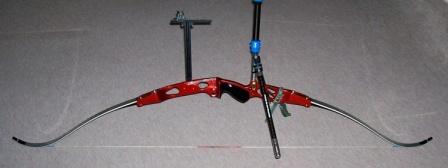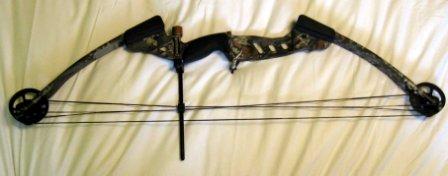This is a guide to some basics about the various types of Bow commonly available which may help anyone new to the subject who is looking at purchasing one from a prepping/survival point of view.
Before I get into the various types of Bow, just a note to remind anyone thinking of purchasing a Bow that hunting with any type of Bow or Crossbow is illegal in the UK. There is a strong tradition of Bow Hunting in places like the US and Australia though so if you did want to look into it further for research then forums based in those countries would be a good place to start.
In the event of a total breakdown, owning and knowing how to shoot a Bow could help in many ways from hunting to defence, with the added advantage that the ammunition can be reclaimed or made from scratch with a little knowledge. Although an Air Rifle would be better for taking Rabbits, for anything larger than a bunny a Bow would be a lot more effective than an Air Rifle. Bows also have an advantage over fire arms due to the fact that they are to all intents and purposes silent. In the event of a breakdown of society a Fire Arm may well offer an advantage to defence and hunting over and above what a Bow can offer but the noise may also attract some very unwanted attention and in certain situations that may be the last thing you need. Another advantage the Bow currently has (for now at least) is that no licence is required to own one and neither will you be entered on a register as soon as you purchase one, although knowing how things are these days that may not be the case for much longer
Bows have been in existence for thousands of years and range from the very basic “Self Bow” (a bow made from a single piece of wood) to the modern day Compound Bow with its Cams and complicated string arrangements. As there are so many different types of Bow around the world I will just describe 3 of the main types you will find in the UK, the Longbow, the Recurve Bow, and the Compound Bow.
The (English) Longbow
A quick bit of history. Originally developed by the Welsh it was adapted for use by the English and probably reached its peak of military use in the late 1300’s to early 1400’s as an Artillery weapon. It could be a devastating weapon when used in the correct situation by trained archers, but only in certain situations. Generally they were made from a single piece of Yew but even in the Middle Ages we had used most of the good Yew in England and had to resort to importing staves from places like Spain and Italy.
With the introduction of cannon to the battlefield the Longbow gradually fell out of favour. In the Victorian period people started to rediscover the Longbow as a hobby and development continued. The Victorian Longbow was / is often made of laminates (two or more pieces of wood glued together) and also has to conform to strict dimensions and build criteria which wasn’t so much the case with the original Longbow used for war. If you search the Web for images of a ‘War Bow’, which can be up to 150lb Draw Weight, you will see the difference between the War Bow and the Victorian Longbow. A lot of Victorian style Longbows built these days will be around 50lb Draw weight, and those used for Re-enactments might be around 30lb. A 50lb Longbow would be more than enough power for the majority of uses it would be put to in the event of a collapse. The vast majority of us would probably never even come close to being able to draw a 150lb War Bow
The advantage of a Self Bow from a survival point of view is their simplicity. One piece of wood, a string, and an arrow and you are good to go, very little to go wrong other than the bow itself cracking. It is not as accurate as a Recurve or Compound but can be made without access to modern tooling and materials.
A good wood for making a very simple Self Bow in an emergency is Ash, it wont last very long unless you are skilled at making a Bow but it will help in the short term in a survival situation. Making a decent, long lasting Longbow is a skilled art and there are still some very good Bowyers building them today but expect to pay £300 – £400 to purchase a decent one
The Modern Take-Down Recurve Bow
A direct descendant of the American Flatbow (AFB), it is the type of Bow you will see in the Olympics, complete with various aids such as Sights, Balance Rods, Stabilisers, Release Aids etc. These days they can be made from various high tech materials but originally they were mostly made from either wood or metal. The original AFB was developed in the early part of the twentieth century when investigations took place to examine why the Longbow was so effective. What they actually found was that a rectangular flatbow was a better profile for a bow than the “D” shaped Victorian Longbow so bow development went off in a new direction.
The advantage of a Recurve in a survival situation is its ease of use, power, accuracy (better than a longbow), and also the option of breaking it down into its parts for easy storage and transport. You can also store spare limbs that can be attached to the riser in the event of a breakage so you don’t have to throw the whole bow away if a limb breaks. Not as simple to make in a survival situation but still possible with the correct skills and knowledge but probably beyond the skills of a general lay person.
Compound Bow
The type of Bow you might see in some modern war films, generally shorter than a Longbow or Recurve with a complicated arrangement of string and cams. They are in the main more powerful and accurate than both the Longbow and Recurve and seem to be favoured in the US and Australia by Bow Hunters (although all the other types of Bow are used as well)
As I mentioned earlier their advantage in a survival situation can be their power, accuracy, ease with which the arrow can be held in the drawn position (on a 60lb Compound Bow although you would have to draw 60lb, at full draw you may only be holding 15lb due to the Cams), and also their size. The downside of the cams and string arrangements is that there are more things to go wrong and a lot of things to adjust.
Without modern tooling and materials a Compound Bow would be extremely difficult to make in a post fall environment
Conclusion
From a purely personal perspective (and many people will have an equally valid but different opinion) I would favour having a Take-Down Recurve Bow which is a good compromise between power/accuracy and simplicity, a spare Riser (Handle) and a couple of spare Limbs. Also the knowledge to make a fairly decent Self Bow would be very advantageous as you never know when you could be separated from your stores and equipment
I don’t see Bows as a replacement for Air Rifles or Fire Arms but rather as a compliment to them. In some areas an Air Rifle is the best option, in others a Bow will be superior.
In the next article I will describe some of the things you need to know prior to spending your money on your first Bow.



Thanks for this. I’ll certainly be looking for a bow when I get some cash.
You don’t have to spend hundreds on a decent Bow, I have my eye on a Samick SBK 50, although I might have to wait till xmas for it. Its not a take-down but is very small, weighs about 13oz, and can be picked up for less than £100
Its a bit of a modern take on an asian horsebow (ish) and has had some very decent reviews on Archery Forums, and it looks great too 🙂
JD,
Thanks. I always take advice where I can so I’ll have a look at that.
Sorry SD, my mistake, it’s a “Samick SKB 50” not an “SBK”
excellent it sounds a good choice